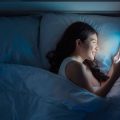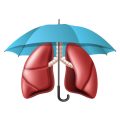Introduction to Blue Light and Circadian Rhythms
Blue light is a high-energy visible (HEV) wavelength of light, ranging from approximately 400 to 490 nanometres. While it occurs naturally in sunlight, blue light is also emitted by a variety of artificial sources that are ubiquitous in daily British life, such as LED lighting, smartphone screens, computers, televisions, and tablets. In the UK, where over 90% of households regularly use digital devices and energy-efficient lighting, exposure to artificial blue light has become a routine part of modern living.
The human body operates on a natural internal clock known as the circadian rhythm. This roughly 24-hour cycle influences sleep-wake patterns, hormone production, body temperature, and overall wellbeing. Sunlight is the primary regulator of our circadian rhythm, with blue light playing a crucial role in signalling to the brain when it is time to be alert or prepare for rest. Disruption to this finely tuned system can have significant consequences for sleep quality and general health—an increasingly relevant issue as Britons spend more time indoors and on screens.
2. The Science: How Blue Light Affects the Body
Blue light, particularly in the wavelength range of 460–480 nanometres, plays a crucial role in regulating the human circadian rhythm. This process is deeply rooted in our evolutionary biology, as natural sunlight has always served as a key environmental cue for our internal clock. When blue light enters the eye, it is detected by specialised photoreceptors known as intrinsically photosensitive retinal ganglion cells (ipRGCs). These cells are not involved in forming visual images but are highly sensitive to blue wavelengths and directly communicate with the brain’s master clock—the suprachiasmatic nucleus (SCN) in the hypothalamus.
Physiological Mechanism: A Step-by-Step Overview
| Step | Description |
|---|---|
| 1. Exposure | Blue light is absorbed by ipRGCs in the retina, especially during daylight hours or via artificial screens at night. |
| 2. Signal Transmission | ipRGCs send signals directly to the SCN, which acts as the body’s primary circadian pacemaker. |
| 3. Hormonal Regulation | The SCN interprets these signals and regulates melatonin production by the pineal gland—blue light exposure suppresses melatonin release. |
| 4. Circadian Adjustment | Reduced melatonin delays sleep onset, shifts circadian timing, and increases alertness, aligning or misaligning internal rhythms with external cues. |
Current Research Insights
A growing body of UK-based and international research highlights that even relatively brief exposure to blue light in the evening can significantly disrupt melatonin secretion and alter sleep patterns. For example, a study published in The Journal of Physiology found that British participants using electronic devices for just one hour before bed experienced measurable delays in both subjective sleepiness and objective melatonin onset. Notably, this disruption was more pronounced among younger adults and adolescents, who tend to be more sensitive to blue wavelengths. The Royal Society’s latest review further emphasises that chronic misalignment of circadian rhythms—often caused by late-night screen time—may contribute to increased risk of metabolic disorders and mood disturbances.
The Takeaway for Everyday Life
Understanding these physiological pathways enables individuals to make informed decisions about their evening routines. In line with NHS recommendations, limiting screen exposure after sunset and utilising “night mode” features on devices can help mitigate blue light’s impact on your body clock, supporting more restorative sleep and overall health.
![]()
3. Sources of Blue Light in the UK Context
Blue light exposure is an increasingly relevant concern in the UK, given the nation’s high adoption of digital technology and modern lighting solutions. Electronic devices are among the most significant contributors to blue light exposure in daily life. Smartphones, tablets, laptops, and televisions emit considerable amounts of blue wavelengths, particularly those using LED or LCD screens. According to Ofcom’s latest data, UK adults now spend more than four hours a day online on average, intensifying their contact with blue light sources.
Lighting in homes and workplaces has also shifted towards energy-efficient options such as LED bulbs and compact fluorescent lamps (CFLs). While these choices are lauded for their sustainability, they often emit higher levels of blue light compared to traditional incandescent bulbs. In UK offices, open-plan workspaces commonly use overhead LED panels that contribute to prolonged exposure throughout the working day. Many Britons have adopted similar lighting at home for its longevity and brightness, further increasing cumulative blue light exposure in domestic environments.
The UK’s outdoor environmental factors add another layer to blue light interaction. Daylight naturally contains blue wavelengths, which help regulate our circadian rhythm. However, urban areas across Britain have seen a growing use of LED streetlights as part of citywide sustainability initiatives. While beneficial for energy consumption and visibility, these LEDs emit a spectrum rich in blue light. For those living in cities like London or Manchester, nighttime outdoor exposure can inadvertently delay melatonin production and disrupt sleep cycles, especially when combined with indoor electronic device usage late into the evening.
Understanding these prevalent sources is crucial for developing practical strategies to manage blue light exposure in everyday British life—whether by moderating screen time, adjusting indoor lighting choices, or being mindful of after-dark outdoor illumination.
4. Disruption of Circadian Rhythms: Evidence and Risks
Excessive exposure to blue light, especially during the evening hours, has been shown to interfere with our natural circadian rhythms. The circadian rhythm is a roughly 24-hour cycle regulated by the brain’s suprachiasmatic nucleus, guiding essential biological processes such as sleep-wake patterns. Recent UK-based studies, including those cited by the NHS, have highlighted a direct correlation between increased screen time and disruptions in sleep quality among both adults and children.
According to an NHS Digital survey conducted in 2023, over 70% of British adults reported using digital devices within one hour before bedtime. Data from this report indicate that individuals exposed to blue light for more than two hours after sunset experienced a 40% increase in difficulty falling asleep compared to those with minimal exposure. These findings are echoed by research from Kings College London, which demonstrates a significant reduction in melatonin production—a hormone critical for initiating sleep—after evening exposure to blue light sources such as smartphones and tablets.
| Exposure Duration (post-sunset) | Reported Sleep Difficulties (%) | Melatonin Suppression (%) |
|---|---|---|
| <30 minutes | 18% | 10% |
| 30-120 minutes | 32% | 23% |
| >120 minutes | 56% | 38% |
The evidence points towards tangible risks associated with prolonged blue light exposure. Beyond immediate sleep disturbances, chronic circadian misalignment has been linked to increased susceptibility to metabolic disorders, depression, and impaired cognitive function. UK public health guidelines now recommend minimising screen use at least one hour before bedtime and encourage the use of blue light filters on digital devices to mitigate these risks.
5. Impact on Sleep and Health
Disrupted circadian rhythms, primarily driven by blue light exposure from digital devices and artificial lighting, have notable implications for sleep quality and broader health outcomes among the British population. Recent research highlights a growing trend: Britons are spending increasing hours in front of screens, particularly in the evening. This extended exposure suppresses melatonin production, making it more difficult to fall asleep and reducing overall sleep efficiency. According to the UK Sleep Council, nearly one-third of adults report experiencing insomnia symptoms, with screen time identified as a significant contributing factor.
Sleep Quality and Blue Light Exposure
Blue light has a potent effect on delaying the natural sleep-wake cycle. Studies conducted at British universities have found that individuals exposed to blue-rich light within two hours before bedtime take longer to fall asleep and experience reduced deep sleep phases. This disruption not only leads to shorter sleep duration but also impairs cognitive performance, mood regulation, and daytime alertness—issues increasingly reported by young professionals and students across the UK.
Broader Health Consequences
The impact extends beyond mere tiredness. Long-term circadian misalignment is linked to elevated risks of metabolic disorders such as obesity and type 2 diabetes, cardiovascular disease, and even certain cancers. The NHS has raised concerns about the cumulative effects of poor-quality sleep exacerbated by modern lifestyle factors, including pervasive screen use after dark. Moreover, there is mounting evidence from British public health studies that chronic sleep disruption undermines immune function and increases susceptibility to common illnesses.
Population Trends and Public Health Implications
These findings underscore a pressing public health challenge in the UK: balancing technological advancements with biological needs. With digital device use showing no signs of slowing down, experts recommend practical interventions such as implementing digital sunsets, promoting blue light filtering technologies, and encouraging consistent sleep routines. By addressing circadian rhythm disruption at both individual and policy levels, the UK can mitigate long-term health risks while supporting productivity and wellbeing.
6. Practical Steps for Mitigating Blue Light Exposure
Adopt Evidence-Based Screen Habits
To safeguard your circadian rhythm, consider implementing a digital curfew. NHS guidance and emerging UK-based research recommend reducing screen time at least one hour before bed. Utilise the ‘Night Light’ or ‘Night Shift’ modes on devices to minimise blue light emission, or try third-party apps such as f.lux. If you work late or study in the evening, opt for warm-coloured bulbs and dimmer lighting where possible.
Enhance Your Bedroom Environment
Creating a sleep-friendly environment is crucial for circadian health. Invest in blackout curtains, especially important during long summer evenings in the UK when sunset can be late. Limit electronic devices in the bedroom and prioritise analogue clocks over digital screens. Consider using an eye mask if ambient light cannot be controlled.
Use Blue Light Blocking Solutions
Blue light blocking glasses have gained traction in Britain; recent trials suggest they may help reduce subjective sleep disturbance, though evidence is still emerging. For those working night shifts—common in NHS roles—these glasses can be particularly helpful during commutes home under artificial lighting.
Embrace Daylight for Circadian Hygiene
Contrary to evening blue light exposure, daytime sunlight supports healthy circadian rhythms. Make a habit of taking outdoor breaks, even on cloudy UK days, as natural daylight is significantly more potent than indoor lighting. This simple act helps anchor your biological clock and can mitigate some effects of earlier blue light exposure.
Set Device-Free Zones and Routines
Establish device-free zones, such as dining areas or living rooms after 8pm, to reinforce healthier routines. Encourage family or housemates to join in—a collective effort can make these habits stick. For children and teens, setting parental controls or screen timers can support their developing sleep patterns.
Seek Professional Advice When Needed
If you struggle with persistent sleep problems despite these adjustments, consult your GP or a qualified sleep specialist. The NHS offers resources and referrals for sleep clinics across the UK, ensuring you access evidence-based support tailored to British lifestyles.

